-
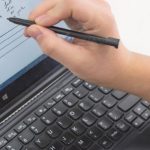
Top 10 Videos for Scales & Key Signatures
The aim of the game here at DSMusic is sequential music literacy and really knowing. This means step-by-step teaching and learning of music aural and music theory concepts, followed by the practicing of these in a variety of ways. Scales and key signatures (tonality) are a vital part of any music literacy approach. They pop […]
-

Top 10 Videos for Chords, Chord Progressions & Cadences
Here at DSMusic, we understand that a lot of what we teach and learn in the music aural and theory space is connected. While this often means we can practice several musical concepts within the same activity, it can also make step one a little daunting. Concept-wise — chords, chord progressions and cadences definitely fit […]
-

Top 6 Ways Solfa Can Help You With Music Performance
While we all know that becoming truly musically literate — which is the aim of the game here at DSMusic — lends itself quite well to improving our musicianship and theory skills, all that do re mi also actually applies to the practical side of things too. That’s right! Solfa isn’t just for when you’re […]
-

Top 10 Tips for Tackling Music Performance Analysis
Here at DSMusic, we’re pretty heavily focused on the music language side of things, and the really knowing. However, we’re also big fans of music performance analysis — understanding what other performers are doing musically to make us feel a certain way. We really get lost listening to music and decoding the mysteries behind mood, […]
-
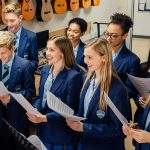
Why singing is key for music teaching and learning.
When I set out to design the DSMusic material, I knew I wanted to create a program that would teach my students to become truly musically literate – to be able to ‘read’ and ‘speak’ music like we do other languages. That is, when we see words written we understand their meaning and we know […]
-

A Few of my Favourite ….. Interval Activities
A Few of my Favourite ….. Interval Activities I was recently struck by how many activities we need to keep our students interested and engaged in our music classes. If we teach something to our 4 year old students (e.g. “beat”) then we need to have sufficient practice activities to challenge our students enough […]
-

Top 10 Videos for Music Theory & Aural Concepts
Here at DSMusic, we’re big on all things music language, and building music literacy using Kodály-inspired strategies. We know that while the fundamentals of what we’re teaching and learning in these spaces hasn’t changed too much, what we’re required to do come exam time often gets tweaked. This is the case for us in Victoria […]
-
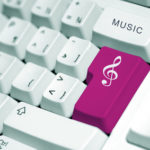
Why scales are key when it comes to tackling tonality.
Anytime we’re approaching questions or activities built around the concept of tonality or key signatures, there’s a great deal of assumed knowledge we’re trying to tap into. As with much of our musicianship elements, everything is interconnected. We can’t teach and learn and really know tonality until we have an understanding of scales and key […]
-

Top 10 music literacy tips to set up your school year!
Look, let’s be honest, returning to school for a new year feels a little bit like coming out of a deep festive-season-holiday hibernation. The thought of showing up on day one and having your entire music theory approach planned out for the year can be daunting. However, what you do on day one is actually […]
-
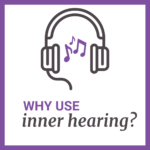
Inner Hearing — why audiation is key!
As musicians we should aim to be able to read music just as easily as we read a book. When we read books, we hear the words in our mind rather than speaking them aloud. Just as we can hear the written word in our heads, it is important to learn how to hear written […]
-
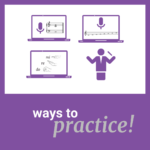
Intervals, semiquavers and practicing how to practice!
Check out some resources and content you might have missed around the DSMusic space recently. Resource Round-Up DSMusic’s top tips for practicing musicianship! Needing to “practice” is quite a catch-cry in the music learning space but sometimes it can be a little harder to model what that might look like for our students, as far […]
-
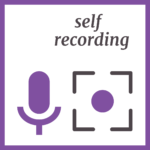
Why you should record yourself during music practice!
As a “performer” – even if you are only singing scales in the shower – you do not hear yourself the way others do. You may be too busy thinking about the Solfa names of the notes you are singing or the rhythm Deb asked you to clap as you sing that melody. Consequently, to […]
-

Ways to Actually PRACTICE your musicianship skills: DSMusic’s Top Tips
Here at DSMusic, we’re big on all things music language, sequential scaffolding and skill strengthening. Cracking into concepts and then taking learning all the way through to knowing. Needing to “practice” is quite a catch-cry in the music learning space but sometimes it can be a little harder to model what that might look like […]
-
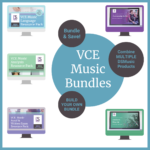
Practice tips, resource bundles & beating exam stress.
Check out some resources and content you might have missed around the DSMusic space recently. Resource Round-Up Get more of what you need from DSMusic for less! Announcing the launch of FIVE brand new BUNDLE options for VCE Music! Bundle together the DSMusic online courses for Analysis & Musicianship to get your interpretation as well […]
-

What Know Really Means: Strengthening Your Musicianship Skills
We learn things all the time, but learning is not knowing. Just because you can recall information for a test or parrot something back you’ve been told before, doesn’t mean you actually understand or really know these concepts. In musicianship – being truly musically literate – a key element of really knowing is what’s called […]
-

Solfa, sailing & slow, mindful practice
Check out some resources and content you might have missed around the DSMusic space recently. Resource Round-Up It’s never too late to learn Solfa! Are you always stuck finding ways to get your students better at the musicianship stuff? The Music Language Online Course – Musicianship Module offers daily practice activities across a variety of concepts […]
-

Teaching Music: Tips, Tools & Why We Do It
Check out some resources and content you might have missed around the DSMusic space recently. Resource Round-Up The Importance of Music Education Although all things music literacy and language of music are key here at DSMusic, we’re also big fans of terrific advocacy material. While we as music teachers and students understand the importance of […]
-
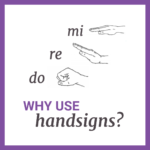
The what, how and why of handsigns
Why use handsigns? Each Solfa note (do, re, mi etc.) has a certain shape you make with your hand whenever you sing it – a handsign. As you sing the notes, you also move your hand up and down in a way that matches how the pitches are moving. It’s this approach that means you […]
-

How Eilish & Holst can help you Decode Sound!
Check out some resources and content you might have missed around the DSMusic space recently. Resource Round-Up Build Better Performers! DSMusic has everything you need to digitally decode character, comparison, tempo, articulation, tone colour and more! Decoding Sound: Analysis for the Secondary School is a fully interactive way for students to build word lists and […]
-
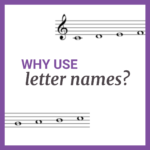
Let’s learn about letter names!
Music language is the method of human communication, either sung, played or written, consisting of the use of notes, in a structured and conventional way. If we’re thinking in terms of language, In music, letter notation can be a system used to represent pitches. In conventional Western note-naming, these are the letters A-G. These letter […]
-

Sounding out rhythms = naming & knowing
Here at DSMusic, we’re big on the idea of really knowing concepts – understanding the what and why so you’re able to apply it to your music contexts in a practical way. Part of our approach to fostering musicianship skills – being musically literate, that is – involves rhythm names (you know, all that ta […]
-
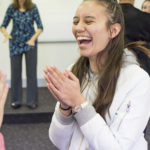
Memorisation & Music Learning
An important aspect of any musicianship, music literacy or music aural and music theory work we do is memorisation. This is where you memorise a specific concept or element (e.g. scales or chords etc.) or activity (e.g. a melody or rhythm etc). The obvious reason for doing this is so that the information is there, in your […]
-

Practicing Transcriptions
It’s not as easy as you think! When we do transcriptions with our students in class that is exactly what we are practicing – the process of TRANSCRIPTION! Yes of course we do have to learn and practice that process but it is learning and practicing the content of the transcriptions that will actually help […]
-
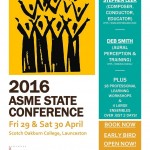
My Tasmanian Adventure
A couple of weeks ago I was one of the key note presenters at the ASME (Tasmanian branch or “TASME” as it’s affectionately known) conference, held at Scotch College Oakburn in Launceston. Having never been a key note speaker before and having never visited Launceston either I was VERY excited (and just a tad nervous). […]
-
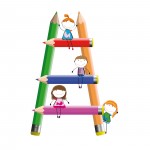
Tone Ladders (What are they & how do I use them?)
What are Tone Ladders? Tone Ladders are a great way ofvisually representing pitch in anintervallically accurate way –that is so long as the intervalsbetween the notes are representedaccurately on the tone ladder. For example, if a tone ladder looks like this: or this: it is NOT representative of the different intervals between the notes e.g. of […]

